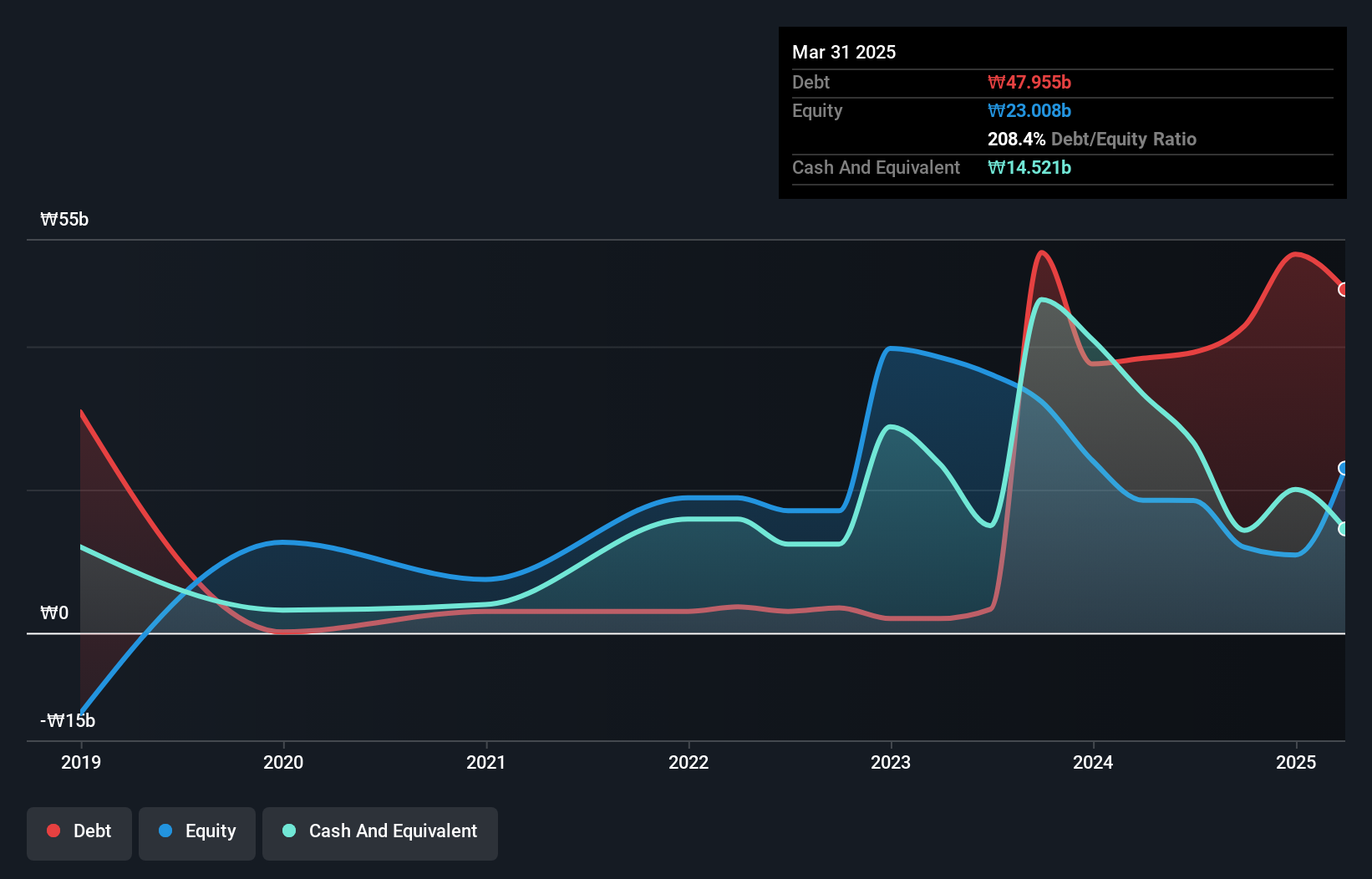The external fund manager backed by Berkshire Hathaway's Charlie Munger, Li Lu, makes no bones about it when he says 'The biggest investment risk is not the volatility of prices, but whether you will suffer a permanent loss of capital.' So it seems the smart money knows that debt - which is usually involved in bankruptcies - is a very important factor, when you assess how risky a company is. We can see that Neuromeka Co., Ltd. (KOSDAQ:348340) does use debt in its business. But the real question is whether this debt is making the company risky.
Why Does Debt Bring Risk?
Debt and other liabilities become risky for a business when it cannot easily fulfill those obligations, either with free cash flow or by raising capital at an attractive price. Part and parcel of capitalism is the process of 'creative destruction' where failed businesses are mercilessly liquidated by their bankers. However, a more frequent (but still costly) occurrence is where a company must issue shares at bargain-basement prices, permanently diluting shareholders, just to shore up its balance sheet. Of course, the upside of debt is that it often represents cheap capital, especially when it replaces dilution in a company with the ability to reinvest at high rates of return. The first step when considering a company's debt levels is to consider its cash and debt together.
What Is Neuromeka's Net Debt?
As you can see below, at the end of March 2025, Neuromeka had ₩48.0b of debt, up from ₩38.3b a year ago. Click the image for more detail. On the flip side, it has ₩14.5b in cash leading to net debt of about ₩33.4b.

How Healthy Is Neuromeka's Balance Sheet?
According to the last reported balance sheet, Neuromeka had liabilities of ₩45.8b due within 12 months, and liabilities of ₩25.8b due beyond 12 months. Offsetting this, it had ₩14.5b in cash and ₩13.8b in receivables that were due within 12 months. So it has liabilities totalling ₩43.2b more than its cash and near-term receivables, combined.
Of course, Neuromeka has a market capitalization of ₩291.4b, so these liabilities are probably manageable. However, we do think it is worth keeping an eye on its balance sheet strength, as it may change over time. There's no doubt that we learn most about debt from the balance sheet. But it is future earnings, more than anything, that will determine Neuromeka's ability to maintain a healthy balance sheet going forward. So if you're focused on the future you can check out this free report showing analyst profit forecasts.
See our latest analysis for Neuromeka
In the last year Neuromeka wasn't profitable at an EBIT level, but managed to grow its revenue by 51%, to ₩25b. With any luck the company will be able to grow its way to profitability.
Caveat Emptor
While we can certainly appreciate Neuromeka's revenue growth, its earnings before interest and tax (EBIT) loss is not ideal. Indeed, it lost ₩18b at the EBIT level. Considering that alongside the liabilities mentioned above does not give us much confidence that company should be using so much debt. Quite frankly we think the balance sheet is far from match-fit, although it could be improved with time. Another cause for caution is that is bled ₩41b in negative free cash flow over the last twelve months. So in short it's a really risky stock. The balance sheet is clearly the area to focus on when you are analysing debt. However, not all investment risk resides within the balance sheet - far from it. We've identified 2 warning signs with Neuromeka , and understanding them should be part of your investment process.
If, after all that, you're more interested in a fast growing company with a rock-solid balance sheet, then check out our list of net cash growth stocks without delay.
Valuation is complex, but we're here to simplify it.
Discover if Neuromeka might be undervalued or overvalued with our detailed analysis, featuring fair value estimates, potential risks, dividends, insider trades, and its financial condition.
Access Free AnalysisHave feedback on this article? Concerned about the content? Get in touch with us directly. Alternatively, email editorial-team (at) simplywallst.com.
This article by Simply Wall St is general in nature. We provide commentary based on historical data and analyst forecasts only using an unbiased methodology and our articles are not intended to be financial advice. It does not constitute a recommendation to buy or sell any stock, and does not take account of your objectives, or your financial situation. We aim to bring you long-term focused analysis driven by fundamental data. Note that our analysis may not factor in the latest price-sensitive company announcements or qualitative material. Simply Wall St has no position in any stocks mentioned.
About KOSDAQ:A348340
Low risk with worrying balance sheet.
Market Insights
Community Narratives



